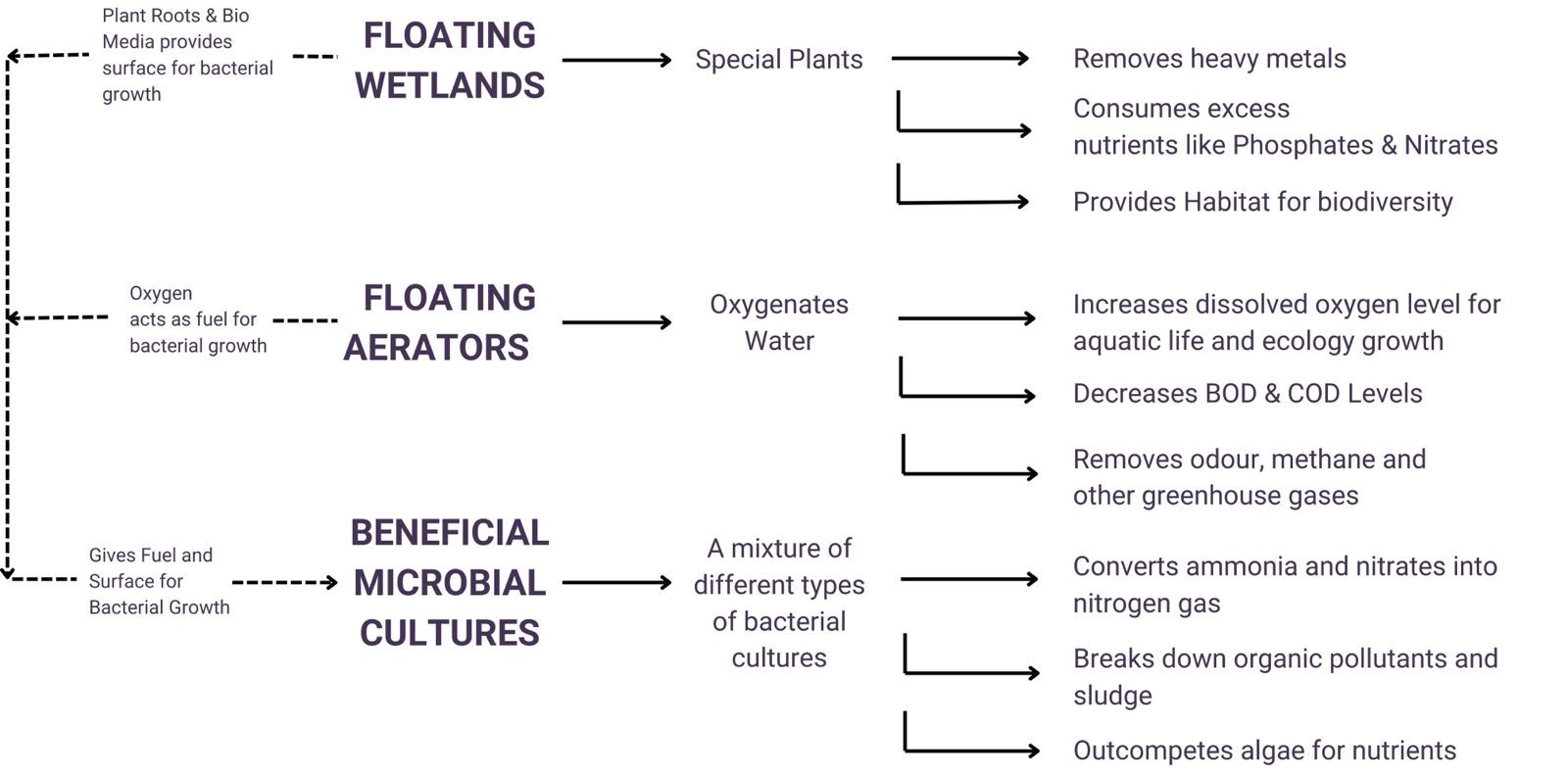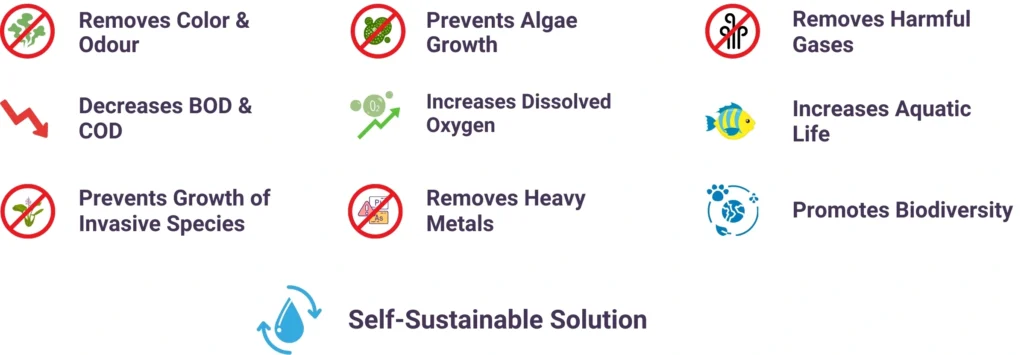
Mechanism of Impact:
Floating Wetlands are artificial platforms that support plants with roots extending into the water. The roots, along with bio media, provide a large surface area for bacterial growth. These bacteria play a crucial role in breaking down pollutants and balancing nutrient levels in the water.
Key Components & Functions:
Impact on Water Quality:
Mechanism of Impact:
Aerators work by pumping oxygen into the water. Oxygen acts as a fuel source for aerobic bacteria, which need it to break down organic matter and reduce pollutants.
Key Components & Functions:
Impact on Water Quality:
Mechanism of Impact:
Beneficial Microbial Cultures consist of various bacterial strains that are introduced into the water to accelerate the breakdown of pollutants. These microbes feed on excess nutrients, helping to balance the ecosystem and reduce
contaminants.
Key Components & Functions:
Impact on Water Quality:
Mechanism of Impact:
Floating Wetlands are artificial platforms that support plants with roots extending into the water. The roots, along with bio media, provide a large surface area for bacterial growth. These bacteria play a crucial role in breaking down pollutants and balancing nutrient levels in the water.
Key Components & Functions:
Impact on Water Quality:
Mechanism of Impact:
Aerators work by pumping oxygen into the water. Oxygen acts as a fuel source for aerobic bacteria, which need it to
break down organic matter and reduce pollutants.
Key Components & Functions:
Impact on Water Quality:
Mechanism of Impact:
Beneficial Microbial Cultures consist of various bacterial strains that are introduced into the water to accelerate the breakdown of pollutants. These microbes feed on excess nutrients, helping to balance the ecosystem and reduce
contaminants.
Key Components & Functions:
Impact on Water Quality:

© Copyright 2022 Clean-Water. All Rights Reserved || Design by H IT 360 Solution